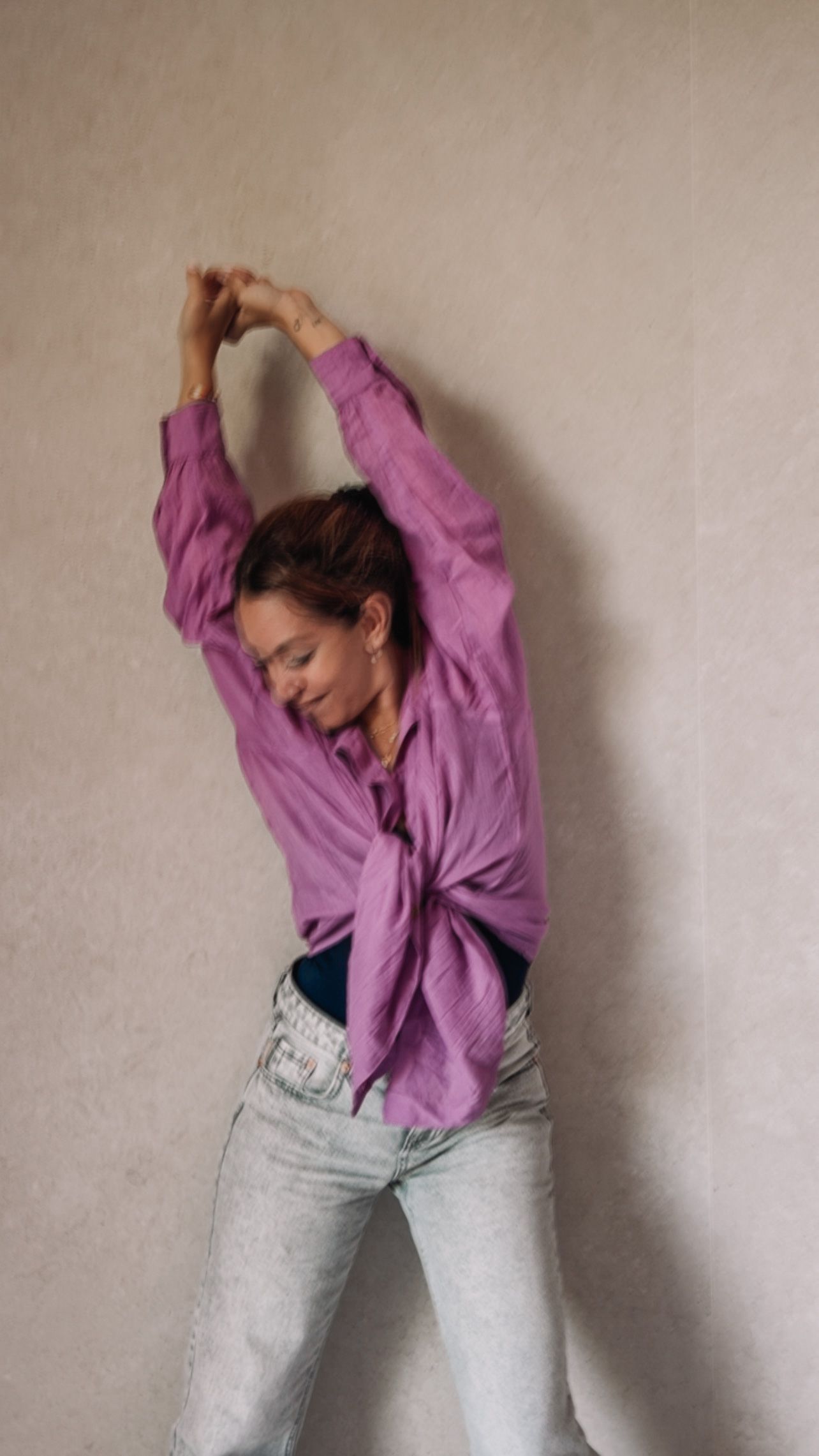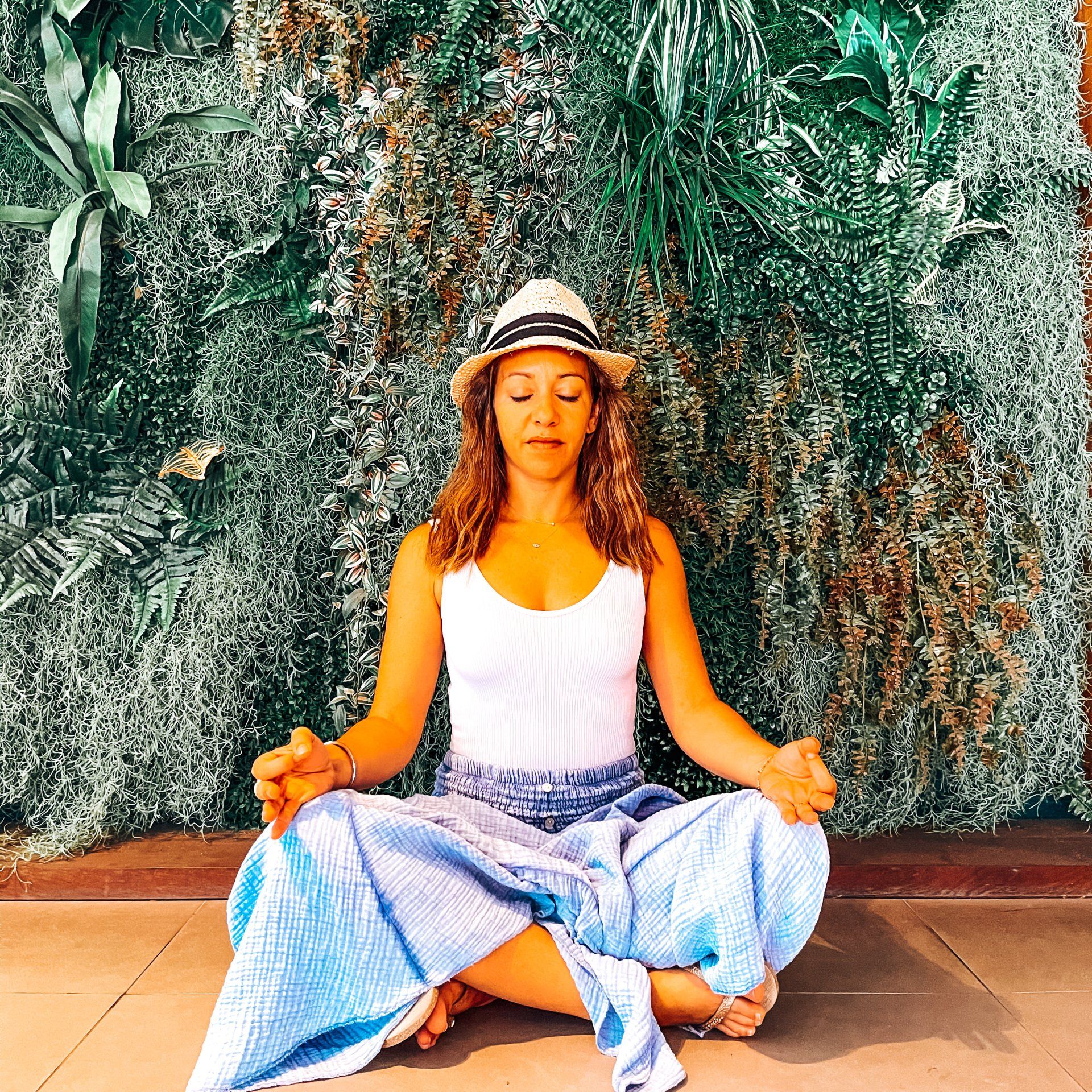Yoga: Why and How to Set an Intention
Yoga: Why and How to Set an Intention
What Is an Intention in Yoga?
An intention, or sankalpa in Sanskrit, is a conscious statement of a desire or inner direction. Unlike a measurable goal, an intention is not about performance or outcome.
👉 It works like an inner compass:
- It directs your energy and focus.
- It brings deeper meaning to your practice.
- It connects every movement to a greater purpose.
You can think of an intention like a magic lamp: when you formulate it with conviction, you send a clear signal to your mind and to the universe. What you vibrate inside of you eventually begins to manifest in your life.
Why Set an Intention in Yoga?
In everyday life, we often act out of habit or routine. Yoga, on the other hand, invites us to act with awareness and presence.
Setting an intention means deciding the quality you want to bring into your practice and your life.
Some examples:
- Cultivating patience.
- Finding serenity.
- Building self-confidence.
- Welcoming more joy.
💡 Your intention becomes a guiding thread—it colors your practice and continues to support you long after you’ve rolled up your mat.
How to Formulate an Effective Intention
A good intention is clear, simple, and positive. It shouldn’t be a long list of impossible wishes but rather a short reminder that deeply resonates with you.
4 Tips for Setting Your Intention
- Use positive words: instead of “I don’t want stress,” say “I welcome peace.”
- Keep it short: one word, a short phrase, or a mantra is enough.
- Listen to your heart: your intention should feel authentic, not imposed.
- Let go of control: don’t focus on the “how”—trust the process.
✨ Examples of simple intentions:
- “Gratitude.”
- “I open myself to trust.”
- “I am at peace with myself.”
- “My body is my ally.”
When to Set Your Intention in Yoga
Your intention can be present throughout your practice, at different moments:
- At the beginning of the session: to set a clear direction and center yourself.
- During the poses: in a challenging asana, it can become a source of strength and focus.
- In resting postures: like Child’s Pose (Balasana), it helps you return to yourself.
- At the end of the session: during Savasana, it sinks deeper into your subconscious and continues to guide you afterward.
The Benefits of Setting an Intention
The effects of this practice go far beyond the yoga mat.
On the mat
- Improved focus and presence.
- More stable motivation.
- Alignment between body and mind.
- Deeper emotional engagement.
In daily life
- More positive mental habits.
- Better self-awareness and understanding of your needs.
- Choices that align with your true values.
- Greater clarity and confidence in decision-making.
👉 An intention works like an active meditation, extending far beyond yoga into your everyday life.
Bringing Intention Into Your Routine
Setting an intention doesn’t have to stay on the mat. It can become a daily ritual:
- In the morning: set your intention upon waking to start the day with clarity.
- During the day: recall it during stressful moments or before an important decision.
- In the evening: meditate on it before sleep so it anchors in your subconscious.
Even outside of yoga, an intention acts like a compass, keeping you centered and aligned.
Frequently Asked Questions
What’s the difference between an intention and a goal?
A goal is concrete and measurable (“I want to run 5 km”). An intention is an inner direction (“I welcome more energy”).
Should I repeat the same intention every session?
Yes, repetition reinforces its impact and builds positive mental habits. But you can also adapt it to your needs of the moment.
What if I have no inspiration?
Choose a simple word like joy, peace, or gratitude. The most important part is how it resonates with you.
Can I use an intention outside of yoga?
Absolutely! It can guide your day, strengthen your energy, and support your choices.
Can setting an intention really change my life?
Yes. By consciously aligning your thoughts and energy, you create coherence between what you want and what you do. It’s a powerful tool for transformation.
Conclusion: Your Intention, Your Inner Power
Setting an intention in yoga is much more than a symbolic act. It’s choosing to bring awareness into your practice and your life. It transforms a simple sequence of postures into a meaningful, aligned experience.
👉 So, what intention will you choose for your next session?
To go further, you can read “The Secret” by Rhonda Byrne (or watch the documentary on Netflix), which explores the power of thought and intention.
And if you’d like to experience the power of intention through yoga and movement, join our online Yoga Dance studio: www.yogadanse.eu 🌿
Because in the end, your greatest power lies in your thoughts and the energy you choose to embody.
Namaste 🪷







